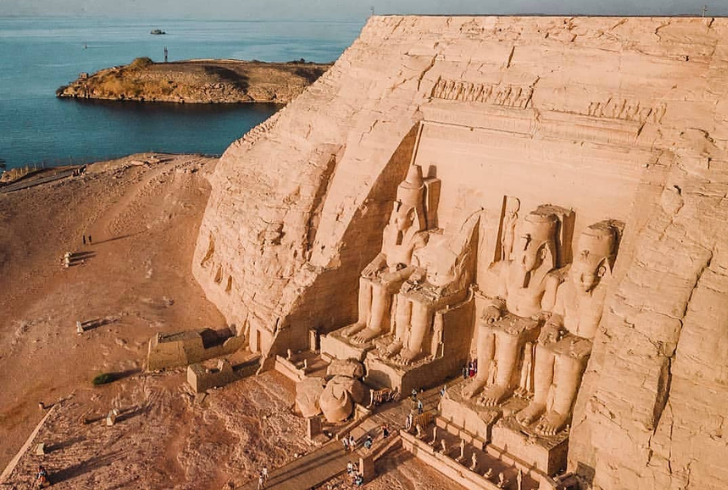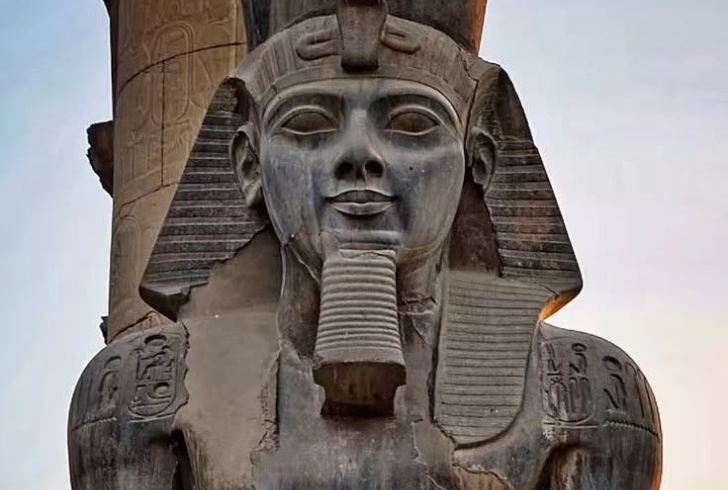New Findings at the Temple of Ramses II Uncover Its Fascinating History
Deep within Luxor’s arid landscape, archaeologists continue to uncover stories that redefine the legacy of ancient Egypt. The latest revelation from the Temple of Ramses II, also known as the Ramesseum, has unearthed more than just sandstone ruins.
It has offered a closer look at the pharaoh’s multifaceted vision, one that merged spirituality, education, administration, and economy into a single, powerful institution.
Ancient Site With a Modern Spotlight
Located on the Nile’s west bank, this 13th-century BCE temple honors one of Egypt’s longest-ruling pharaohs. Although the temple has drawn scholarly attention since the 18th century, the latest excavation mission, led by the Supreme Council of Archaeology and the French National Center for Scientific Research, brings brand-new discoveries to light.
Among the most intriguing finds is what researchers now call the “House of Life.” Though scholars had long theorized the presence of an educational facility, this marks the first time physical proof has confirmed the theory.
A School for Scribes Hidden in Stone

Instagram | travelfreak | Located on the Nile’s west bank, this 13th-century BCE temple honors one of Egypt’s longest-ruling pharaohs.
Archaeologists uncovered a surprising collection of educational materials within the complex. Student drawings and instructional tools offer a glimpse into how priests and scribes once trained at the site. Clearly, the temple didn’t serve only spiritual needs—it prepared future generations to carry out administrative and religious duties.
Adding to that narrative, the team found evidence of administrative offices built on the temple’s eastern flank. These structures likely supported the temple’s broader operational role, blending religious rituals with day-to-day governance.
Tombs Offer Clues From a Tumultuous Era
In addition to discoveries within the temple, the excavation revealed several tombs dating to the Third Intermediate Period (1077–664 BCE). These burial sites, formed during an era of foreign rule and political unrest, highlight the Ramesseum’s extended importance well after Ramses II’s reign.
Carefully constructed chambers held funerary objects and skeletal remains, all remarkably preserved. This suggests that long after its original construction, the temple grounds remained active and meaningful to those who came later.
Industry and Infrastructure in the Shadow of the Temple
Archaeologists didn’t stop at tombs and classrooms. Near the sacred site, they found facilities including:
1. Textile workshops
2. Stone carving stations
3. Large kitchens and bakeries
4. Wine cellars and storage rooms for goods like honey and olive oil
These findings emphasize how the temple served as a hub for both production and redistribution. In short, it functioned like a small, self-sufficient city.
As Mohamed Ismail of the Supreme Council of Archaeology explained, “This temple served as a royal institution where the religious rites of sanctifying the pharaoh were held during Ramses’s lifetime.” He added that it also played a pivotal economic and administrative role in the wider region.
Restoration Work and a Family Legacy

Instagram | visitegypteg | King Ramses II shaped Egypt with peace, growth, and lasting achievements.
Past restoration efforts at the Ramesseum have helped to rebuild essential parts, including the southern colonnade and central courtyard. In a symbolic act of preservation, artifacts belonging to Ramses’s mother, Tuya, were returned to their original location near his grand statue.
Built with sandstone and inspired by his father’s mortuary complex, the Ramesseum remained a cult site for nearly a century after Ramses II’s passing. That legacy, rooted in family and worship, continues to shape archaeological efforts today.
A Pharaoh’s Lasting Impact
During his 67-year rule, Ramses II greatly increased Egypt’s land area. Among his diplomatic accomplishments is the 1271 BCE signing of the oldest known peace contract with the Hittites. But his influence went far beyond war and conquest.
Thanks to the latest findings, it’s now clear that his rule also cultivated education, infrastructure, and civic planning—values etched into every stone of the Ramesseum.
Ancient Architecture, Modern Relevance
With each dig season, the Ramesseum reveals more than broken columns or sun-scorched walls. It tells a story of ambition, strategy, and enduring influence. These newest discoveries don’t just enhance historical records—they deepen appreciation for the cultural complexity of ancient Egypt.
As new missions unfold and more layers are revealed, this iconic temple continues to show why Ramses II earned his place in history—and why the Ramesseum remains a symbol of divine kingship and human progress.